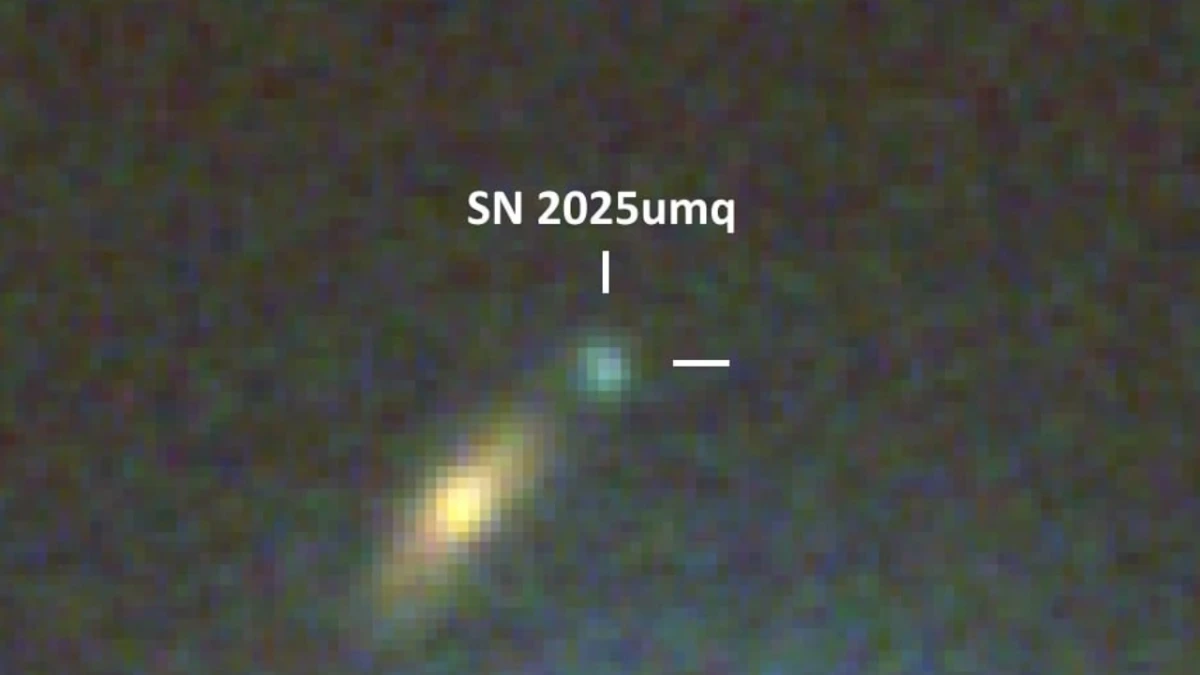| Summary |
|
A Russian amateur astronomer has discovered a supernova more than 2 billion light-years away, using a rented telescope on the opposite side of the planet. On August 17, Filipp Romanov spotted the faint glow of SN 2025umq in the constellation Pisces. The find was later confirmed as a Type Ia supernova by professional astronomers, making it his first solo discovery of this kind.
Romanov identified the event while scanning images taken through the iTelescope T59 in Australia, a 0.51-meter telescope he controls online from his home in Primorsky Krai, Russia. The object appeared at magnitude 20, barely visible in the data but clearly absent from earlier photographs.

The candidate was reported to the International Astronomical Union’s Transient Name Server, which registered it as AT 2025umq. Follow-up observations from the Liverpool Telescope in La Palma, Spain, confirmed its spectrum as a Type Ia supernova, with a redshift of 0.159.
That places the explosion about 2 billion light-years away. Pre-discovery images from the Zwicky Transient Facility showed the supernova was already active by late July, but Romanov’s report secured his credit.
Type Ia supernovae occur when a white dwarf accumulates too much material from a companion star, triggering a runaway explosion that destroys it completely.
They briefly shine brighter than a billion suns, often outshining their host galaxies. Because these supernovae always reach a consistent peak brightness, astronomers use them as “standard candles” to measure cosmic distances. This method helped reveal the accelerating expansion of the universe and the existence of dark energy.
SN 2025umq adds to the global catalog of thousands of supernovae discovered each year, each one refining distance calculations and models of how galaxies evolve. For astronomers, these explosions also represent factories of heavy elements such as iron and nickel, which enrich galaxies with the material needed for planets and, eventually, life.
Romanov’s discovery also highlights the role of amateur observers in modern astronomy. Remote telescope networks like iTelescope allow people anywhere in the world to collect professional-grade data without owning large instruments. By booking time on telescopes in Australia, Spain, and the U.S., Romanov can bypass local weather and light pollution, giving him constant access to clear skies.
Romanov, self-taught and based in Russia’s far east, has already discovered 82 variable stars, nine asteroids four of which are named for family members and several novae in the Andromeda Galaxy.
He has co-authored other supernova discoveries through survey data but this is his first confirmed find on his own. He has also captured unusual celestial events, including a comet discovery in 2025 and a rare occultation of Uranus by the eclipsed Moon in 2022.
He admitted luck played a role this time, noting that the supernova was located near the edge of the image frame and could have been missed if cropped. Still, the discovery adds his name to the long-running list of amateur astronomers making contributions alongside large automated surveys.
The host galaxy, SDSS J004819.14+075856.8, lies in Pisces, a constellation that rises high in the northern sky during autumn and winter. For now, astronomers will continue to monitor SN 2025umq as it fades, while Romanov prepares for his next search.

